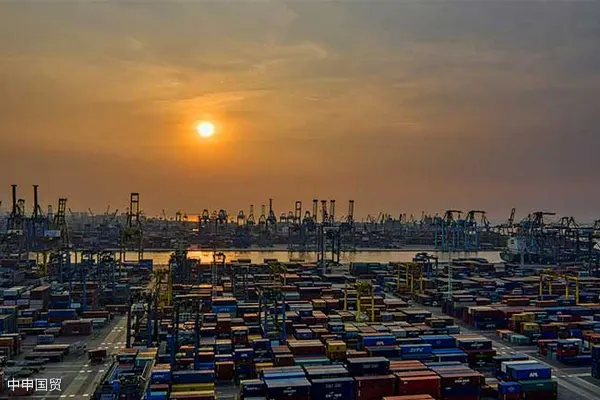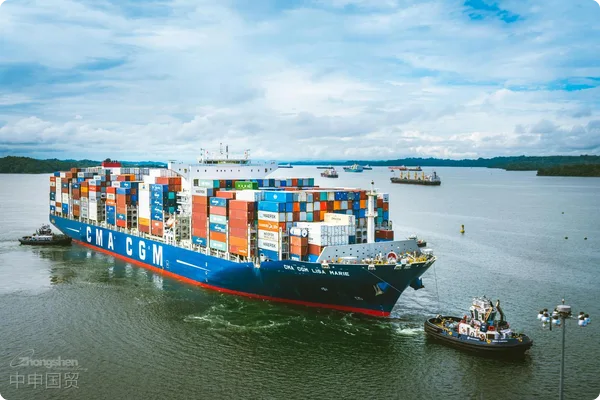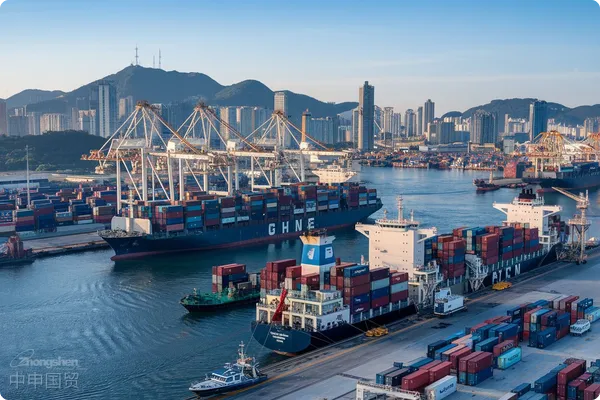- Shanghai Zhongshen International Trade Co., Ltd. - Two decades of trade agency expertise.
- Service Hotline: 139 1787 2118
According to the latest statistics from China Customs, in the first five months of 2024, Chinas goods tradeimport and exporttotal value reached 17.5 trillion yuan, a year-on-year increase of 6.3%. Exports totaled 9.95 trillion yuan, up 6.1%; imports reached 7.55 trillion yuan, up 6.4%; the trade surplus expanded to 2.4 trillion yuan, a 5.2% increase year-on-year. These figures demonstrate Chinas continued stable position in global trade and show strongforeign traderesilience.

In the first five months of this year, Chinas goods trade import and export showed the following main characteristics:
General trade, processing trade, and bonded logistics all achieved growth
Data shows that in the first five months, Chinas general trade import and export value reached 11.4 trillion yuan, up 5.6%, accounting for 65.1% of total foreign trade value. Exports were 6.56 trillion yuan, up 7.9%; imports were 4.84 trillion yuan, up 2.7%. These figures reflect Chinas achievements in enhancing independent innovation capabilities and promoting high-quality development.
During the same period, processing trade import and export value was 3.02 trillion yuan, up 1.6%, accounting for 17.3%. Exports were 1.91 trillion yuan, down 2.3%; imports were 1.11 trillion yuan, up 9.1%. Additionally, import and export through bonded logistics reached 2.42 trillion yuan, up 16.5%. Exports were 916.39 billion yuan, up 12.5%; imports were 1.51 trillion yuan, up 19.2%. The rapid growth of bonded logistics indicates Chinas further enhanced position in global supply chains.
Varying performance with major trading partners
ASEAN remained Chinas largest trading partner, with bilateral trade value reaching 2.77 trillion yuan in the first five months, up 10.8%. Exports to ASEAN were 1.67 trillion yuan, up 13.5%; imports from ASEAN were 1.1 trillion yuan, up 7%. The trade surplus with ASEAN expanded to 579.19 billion yuan, up 28.1%.
The EU was Chinas second-largest trading partner, with bilateral trade value of 2.23 trillion yuan, down 1.3%. Exports to the EU were 1.45 trillion yuan, down 0.7%; imports from the EU were 774.37 billion yuan, down 2.5%. The US was the third-largest trading partner, with bilateral trade value of 1.87 trillion yuan, up 2%. Exports to the US were 1.39 trillion yuan, up 3.6%; imports from the US were 480.45 billion yuan, down 2.6%.
Chinas total import and export value with Belt and Road partner countries reached 8.31 trillion yuan, up 7.2%. Exports were 4.64 trillion yuan, up 7.9%; imports were 3.67 trillion yuan, up 6.4%. This growth reflects the positive impact of the Belt and Road Initiative in promoting economic and trade cooperation among participating countries.
Both private enterprises and state-owned enterprises achieved import and export growth
In the first five months, the total import and export value of private enterprises reached 9.58 trillion yuan, an increase of 11.5%, accounting for 54.7% of the total foreign trade value, up 2.6 percentage points year-on-year. Among them, exports were 6.45 trillion yuan, up 10.2%; imports were 3.13 trillion yuan, up 14.2%. The total import and export value of state-owned enterprises was 2.79 trillion yuan, up 1.9%. The total import and export value of foreign-invested enterprises was 5.09 trillion yuan, down 0.1%.
IV. Strong performance in exports of mechanical and electrical products and labor-intensive products
In the first five months, Chinas exports of mechanical and electrical products totaled 5.87 trillion yuan, up 7.9%, accounting for 59% of total exports. Among them, exports of automatic data processing equipment and components, integrated circuits, and automobiles increased by 9.9%, 25.5%, and 23.8%, respectively. Exports of labor-intensive products totaled 1.69 trillion yuan, up 7.1%.
V. Increased imports of major bulk commodities
In the first five months, China imported 514 million tons of iron ore, up 7%; 205 million tons of coal, up 12.6%; and 54.276 million tons of natural gas, up 17.4%. The growth in imports of these bulk commodities reflects increased domestic industrial production and energy demand.
Outlook and Challenges
Despite significant growth in Chinas foreign trade in the first five months, multiple challenges remain ahead. Increased global economic uncertainty, geopolitical risks, and changes in international market demand may all impact Chinas foreign trade. In particular, the recent announcement by the U.S. to impose additional tariffs on certain Chinese products will introduce new variables to Sino-U.S. trade relations.
Related Recommendations
? 2025. All Rights Reserved. Shanghai ICP No. 2023007705-2  PSB Record: Shanghai No.31011502009912
PSB Record: Shanghai No.31011502009912










